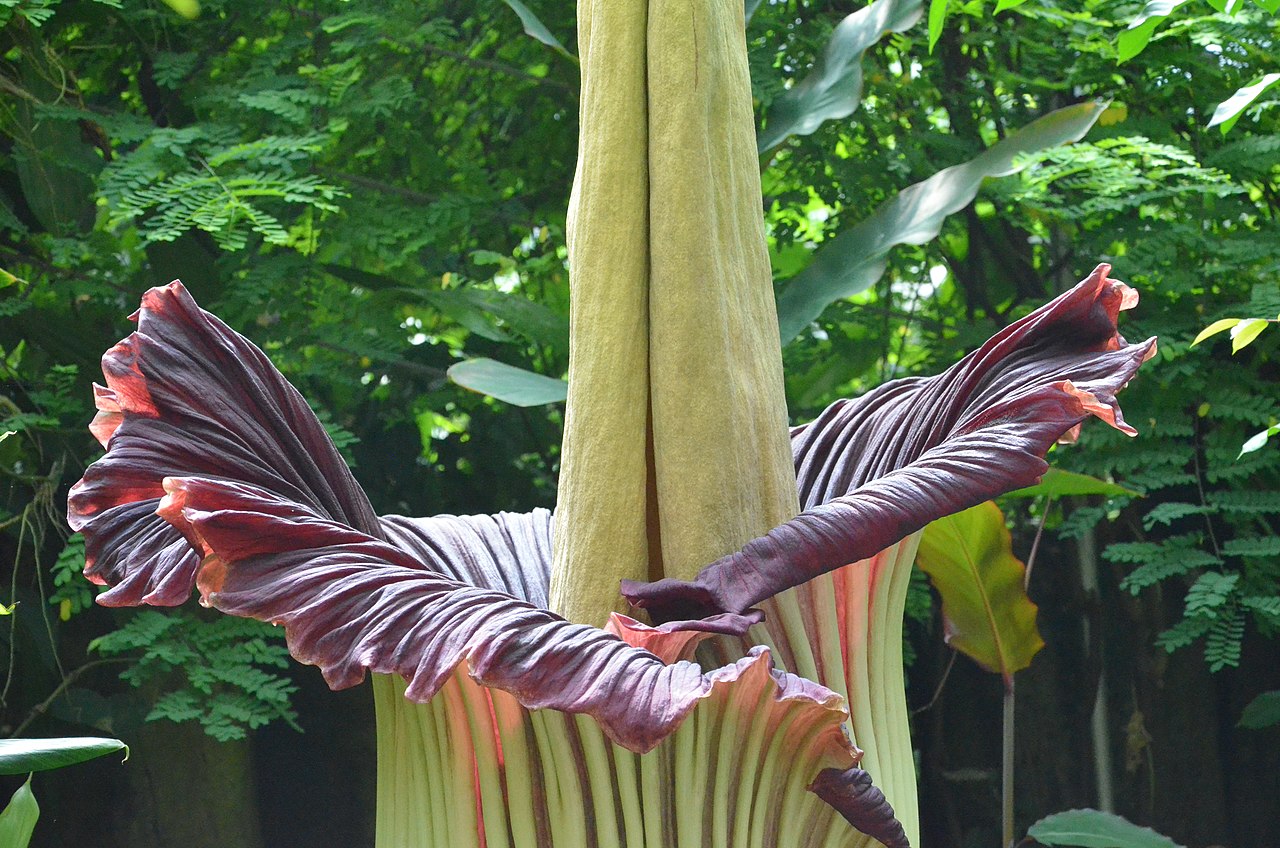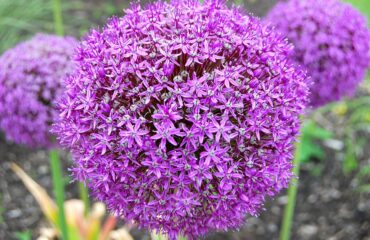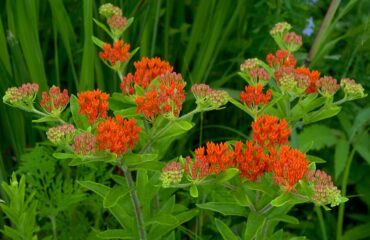Amorphophallus titanum, commonly known as Titan Arum or the Corpse Flower, is a unique and fascinating plant native to the rainforests of Sumatra, Indonesia. It is famous for producing the largest unbranched inflorescence in the plant kingdom and its distinctive odor, which resembles rotting flesh. The massive flower structure consists of a central spadix surrounded by a large, frilled spathe. The spadix can reach up to 10 feet (3 meters) in height. When not in bloom, the plant produces a single, large, umbrella-like leaf on a tall stalk, which can be over 15 feet (4.5 meters) tall. Due to its enormous size and rarity, the Titan Arum is a popular attraction in botanical gardens worldwide.
Preferred Growing Conditions:
- Soil Type: Prefers rich, well-draining, organic soil; thrives in a mix of loamy soil, peat, and compost.
- Sunlight: Grows best in bright, indirect light; requires partial shade to mimic its natural rainforest understory environment.
- Temperature: Hardy in USDA zones 10-11; prefers warm, humid conditions with temperatures between 75-85°F (24-29°C).
- Water Needs: High; requires regular watering to keep the soil consistently moist but not waterlogged.
Amorphophallus Titanum (Titan Arum) Propagation Methods:
1. Seed Propagation:
Growing Amorphophallus titanum from seeds is possible, though challenging due to the plant’s rare and infrequent flowering.
- Seed Collection and Preparation:
- Collect seeds from mature fruit clusters after the plant has bloomed and the berries have ripened.
- Clean the seeds by removing the fleshy outer layer and rinse thoroughly.
- Seeds should be sown fresh for best results, as they can lose viability if stored for long periods.
- Sowing Techniques:
- Fill seed trays or small pots with a rich, well-draining seed-starting mix.
- Sow the seeds on the surface of the soil and lightly press them in without covering, as they require light for germination.
- Mist the surface lightly and cover with a clear plastic lid or plastic wrap to maintain humidity.
- Place the trays in a warm location with temperatures around 80-85°F (27-29°C).
- Germination Requirements:
- Seeds typically germinate within 1-3 months under optimal conditions.
- Once seedlings emerge, remove the cover to provide better air circulation.
- Keep the soil slightly moist and provide bright, indirect light to prevent the seedlings from becoming leggy.
- Care for Seedlings:
- When seedlings have developed several true leaves and are sturdy enough to handle, transplant them into individual pots.
- Choose a well-draining, organic-rich potting mix and a warm, humid environment for the seedlings.
- Note that seed-grown plants may take several years to reach maturity and produce their first bloom.
2. Corm Division:
Corm division is the most effective and reliable method for propagating Amorphophallus titanum, particularly for established plants with large corms.
- Timing:
- The best time for corm division is in late winter or early spring when the plant is dormant.
- Method:
- Carefully dig up the plant and gently remove the soil around the corm.
- Use a clean, sharp knife to divide the corm into smaller sections, ensuring each section has at least one growing point or bud.
- Allow the cut surfaces to dry and callous over for a few days before planting to prevent rot.
- Replanting:
- Replant the corm divisions immediately in prepared pots filled with a rich, well-draining potting mix.
- Plant the corms with the buds just below the soil surface.
- Water lightly to settle the soil around the corms.
- Care After Division:
- Keep the newly planted divisions in a warm, humid environment with bright, indirect light.
- Maintain consistent moisture by watering regularly, but avoid waterlogging.
- Protect from strong drafts and sudden temperature changes during the initial recovery period.
3. Tissue Culture:
Tissue culture is an advanced propagation method used primarily in botanical gardens and commercial settings to produce large numbers of uniform plants quickly. This method involves growing plant tissues in a sterile, controlled environment.
- Process:
- Small pieces of plant tissue, typically from the growing tips or meristem, are sterilized and placed in a nutrient-rich, sterile medium.
- Under controlled conditions, the tissue forms a callus, which then differentiates into shoots and roots.
- Once the plantlets are large enough, they are transferred to soil or a suitable growing medium to acclimate to normal growing conditions.
- Advantages:
- Produces a large number of uniform plants quickly.
- Can propagate disease-free plants and maintain rare or desired characteristics.
Care for Newly Propagated Plants:
- Place new plants in a location with bright, indirect light and a warm, humid environment.
- Water regularly to keep the soil consistently moist but not waterlogged.
- Protect from strong drafts and sudden temperature changes.
- Apply a balanced, water-soluble fertilizer every 4-6 weeks during the growing season to encourage healthy growth and development.
- Maintain high humidity around the plants, especially if growing indoors or in a greenhouse.
Common Challenges and Solutions:
- Root Rot: Ensure good drainage and avoid waterlogging, especially in heavy soils.
- Pests: Monitor for common pests like aphids, spider mites, and mealybugs. Treat infestations with insecticidal soap or neem oil.
- Leaf Browning or Yellowing: This can indicate overwatering, underwatering, or exposure to direct sunlight. Adjust care accordingly.
Additional Tips:
- Rotate pots regularly to ensure even light exposure and prevent the plant from leaning towards the light.
- Clean leaves periodically to remove dust and allow for optimal light absorption.
- Use pots with drainage holes to prevent water accumulation and root rot.
- Handle with care as the Titan Arum can be heavy and difficult to move when mature.
Conclusion:
Propagating Amorphophallus titanum is a challenging yet rewarding process that allows you to grow one of the most fascinating and unique plants in the world. Whether you choose to start from seeds, divide corms, or use tissue culture, with proper care and attention, Titan Arum will thrive and become a stunning focal point in any garden or botanical collection.
Share this article



